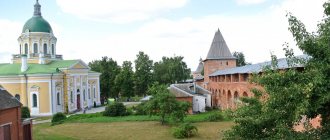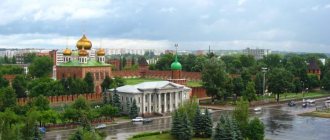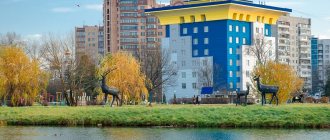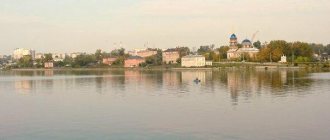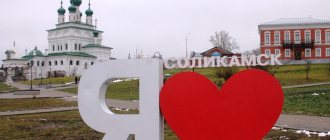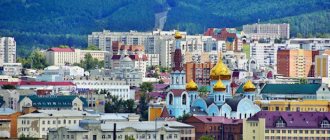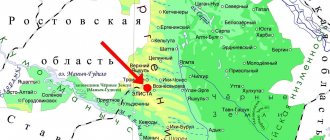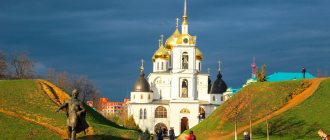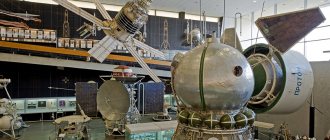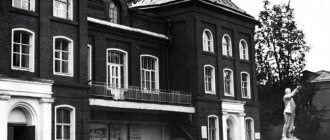Zaraysk is an ancient city in the Moscow region on the Osetr River, first mentioned in the chronicle in 1146. The sights of Zaraysk are mainly associated with its ancient history. The city repeatedly found itself on the path of the Tatar-Mongols and was burned and rebuilt at least twice.
A few facts about Zaraysk
- Zaraysk is located on the border with the Ryazan region, 180 km from Moscow, 74 km from Ryazan.
- The city is crossed by the Sturgeon River.
- Zaraisk has changed many names throughout its history: Osetr, Krasny, Zarazesk, Zaraevsk and others.
- The Kremlin, which is considered the smallest in Russia, has been preserved in Zaraysk.
- The city has a railway, but it is only used for freight trains. Due to the lack of passenger traffic by rail and the rather large distance from Moscow, there are not very many tourists in Zaraysk.
- Zaraysk is a historical settlement of federal significance.
- In 2022, large-scale improvement work was carried out in Zaraysk. Project “Improvement of the historical center. Trade Row Square" won the all-Russian competition "Historical Settlements and Small Towns" and received a grant of 300 million rubles.
- As part of this project, the central streets are paved with paving slabs, children's playgrounds, recreation areas and unique wooden lanterns are installed.
- The population of the city is 22.7 thousand people.
- 50 kilometers from Zaraysk is the most tourist city in the Moscow region - Kolomna, famous for its historical architecture. There is also a Kremlin in Kolomna, but it is much worse preserved.
- The distance from Zaraysk to Kashira is 60 km.
Brief description of the city of Zaraysk
The small town of Zaraysk is located 160 kilometers from Moscow on the banks of the Osetr River. It covers an area of twenty square kilometers and is home to just over 23 thousand people.
Zaraysk is a small town located in the Moscow region
Story
The first mention of the city dates back to 1146, when the settlement was called Osetra. But it was soon burned down by nomads and rebuilt again only in 1225, receiving the name Red. However, this settlement did not last long - only ten years - after which it was burned again. In the 16th century, a stone fortress was erected on this territory, which was supposed to help stop the troops of the nomadic Tatars. The fortress was named Novgorod-on-Osetra. Then the town was transformed into a trade and craft center and became part of the Moscow Principality. And in the 17th century it received a new name - Zaraysk. During the reign of Catherine II, the settlement acquired the status of a county town, acquired its own coat of arms and was built up with stone houses. At the end of the 19th century, industry developed in the city: there were 3 brick factories, a textile and shoe factory. Later, a prison, a hospital and a zemstvo building appeared on the territory of Zaraysk. Today it is a tourist place that attracts travelers with cultural and historical monuments.
History of Zaraysk
Within the walls of the city monastery, an outstanding work of Russian literature was written - “The Tale of the Ruin of Ryazan by Batu.” This chronicle tells about the death of the Zaraisk prince Fyodor Yuryevich, his wife Eupraxia and their little son.
The tragic story is connected with the Ryazan principality, which Batu Khan was about to attack in the fall of 1237. He approached the Voronezh River and was preparing to strike. Ryazan Prince Yuri Igorevich, in order to gain time and attract help from his neighbors, sent his son Prince Fyodor Yuryevich to negotiate.
The negotiations were unsuccessful. Khan Batu demanded tribute from Ryazan and, in addition, the wife of Prince Fyodor Yuryevich Eupraxia, known for her beauty. Having received a decisive refusal, Batu ordered the ambassadors to be killed. Ryazan was doomed: after the storming of the city and fierce battles, it was burned, the Ryazan prince Yuri Igorevich was killed.
As for Princess Eupraxia of Ryazan: having learned about the death of her husband and seeing that Ryazan could not resist, she and her son Ivan jumped out of the tower window. And she fell to her death immediately, they used to say “infected.” According to legend, the name of the city - Zaraysk - came from this word.
How to get there
Zaraysk is located 150 km southeast of Moscow. You can get here by bus No. 330, departing from the Kotelniki metro station. Travel time is 2.5-3 hours. Zaraysk is also connected by bus to Kolomna and Ryazan. From the latter it is separated by 74 km, which can be covered in an hour.
To get to Zaraysk from Moscow by car, you need to take the M-5 Novoryazanskoe highway through Lukhovitsy or the M-4 Don highway through Stupino. You can leave your car in a free parking lot near the Kremlin. The second free parking lot is located at the bus station (southern part of Gostiny Dvor).
Sights of Zaraysk
The architectural appearance of Zaraysk is determined by the churches: approaching the city, it is impossible not to pay attention to the many golden domes. In addition, Zaraysk is one of the few Russian cities that has its own Kremlin. The sights of Zaraysk will be of interest to connoisseurs of architecture, history, literature, culture and various antiquities.
Zaraisky Kremlin
Kremlins in Rus' were built to protect against nomads.
The effectiveness of these fortresses was very high - the Tatar-Mongols could not take some cities for months. However, few Kremlins have survived, and these are mainly fortresses in large cities. Of the small kremlins, the most notable is the Zaraisky Kremlin - it is the only completely preserved defensive fortress in the Moscow region. Construction of the Kremlin lasted from 1528 to 1531. on a high hill at the confluence of the Monastyrka and Osetra rivers. The Kremlin was erected by decree of Prince Vasily III of Moscow. The complex of buildings includes a fortress wall, towers, as well as two churches - St. Nicholas Cathedral and the Cathedral of John the Baptist.
St. Nicholas Cathedral
St. Nicholas Cathedral is the most ancient temple in Zaraysk. It was erected in 1681 by order of Tsar Fyodor Alekseevich on the site of an old temple built at the same time as the Kremlin. When creating the building, the architects were guided by the architectural appearance of ancient Russian multi-domed churches.
Until 1917, St. Nicholas Church was a very rich and beautiful temple. In Soviet times, there was a warehouse for household goods here. Transferred to the church in the 90s.
John the Baptist Cathedral
St. John the Baptist was considered the patron of Novgorod-on-Sturgeon. A church built in the 13th century was consecrated in honor of this saint. Within the walls of the temple were the graves of Prince Fyodor, Princess Eupraxia and their young son. The building has not survived to our times: the church was destroyed during the Time of Troubles.
The Church of St. John the Baptist was rebuilt several times. At the beginning of the 20th century, the Bakhrushin merchants allocated money for the construction of a new temple in the Zaraisk Kremlin. The building was erected on the foundation of an ancient church. The temple was built from 1901 to 1904 in the style of classicism.
Monument to Prince Fyodor, Princess Eupraxia and their son
The monument to the tragically deceased family of the Zaraisk princes was erected in the 13th century - this is the first memorial complex erected in memory of the victims of Batu’s invasion. The monument consists of three white crosses under a tent-like canopy. It is located between the St. Nicholas Church and the Cathedral of John the Baptist.
At first it was on the territory of the Church of St. John the Baptist, but after its reconstruction, the monument ended up outside and was covered with a canopy.
In the 30s of the 20th century, the monument was demolished, but it was restored to its previous appearance in 2002.
Zaraiskaya site
An Upper Paleolithic site was discovered during archaeological excavations on the territory of the Zaraisky Kremlin. The Zaraisk site is the earliest settlement of primitive man on the territory of the Moscow region. Objects such as a bison figurine made from mammoth tusk, bone and flint tools were found here. They can be seen in the Zaraisky Kremlin museum.
Archaeological excavations at the Zaraisk site continue to this day.
Zaraisky Kremlin Museum-Reserve
Website: museumzaraysk.ru. Address: st. Museum, Kremlin . Opening hours: from 10.00 to 18.00 (ticket office until 17.00), closed on Monday, Tuesday and the last Friday of the month.
A museum in Trinity Church dedicated to the history of the city. The collections are divided into two halls. The first exhibition includes local history materials, antique furniture, paintings by I. Repin, L. Bakst and A. Molinari, dishes, figurines, bronze and porcelain items.
The second hall houses an exhibition of photographs and paintings by contemporary artists: mainly landscapes of Zaraysk and the surrounding area.
War memorials
Zaraysk has seen many wars in its lifetime, each of them left its mark on the city, if not in the form of destruction, then in the form of memorable monuments - sad, but at the same time proud.
Cenotaph
- Address - pl. Revolutions.
The memorial is installed in the city center, on Revolution Square. It consists of two parts: the first is a bronze sculpture of an unknown soldier.
The fighter is depicted in full growth, holding a rifle in his hands, and an army cloak falling from his shoulders. Behind it is the second element of the complex - a tall obelisk with the inscription “No one is forgotten, nothing is forgotten” and a silver five-pointed star in the center.
At the foot of the obelisk, an eternal flame burns, wreaths and red carnations laid by the townspeople are colorful.
Alley of Heroes
- Address - pl. Uritsky.
The Alley of Heroes stretches along Uritsky Square. In the middle of a deciduous grove, granite slabs with engraved portraits of heroes of the Soviet Union, whose homeland was the Zaraisky region, are lined up in rows. In the center of the Alley stands a bronze bust of V. Leonov, a native of Zaraysk, twice awarded the title of Hero of the USSR. Victor was a saboteur and naval intelligence officer, and also participated in the war with Korea. His bust is mounted on top of a columnar pedestal with a commemorative inscription, two stars and an image of an anchor.
Monument to the heroes of the Russian-Turkish war
- Address - st. Karl Marx.
The Russian-Turkish War lasted from 1877 to 1878. Many residents of Zaraysk took part in it, some of them managed to survive the bloody battles, others did not return from the battlefield. The monument dedicated to the heroes of that war is located on the territory of the military registration and enlistment office and is a low wall made of brick. It is decorated with bas-reliefs of Fyodor Keller and Nikolai Mezheninov, brave warriors who lived here. Next to the portraits there are stone slabs with a brief biography of the heroes.
Monument to the soldiers of the 140th passage
- Address: Uritsky Square, 1.
Another monument to the events of the Russian-Turkish War is located on Uritsky Square, not far from the Walk of Fame. This is a three-meter stele made of white stone. Its upper part is decorated with the stone Order of St. George the Victorious, and the lower part is decorated with a memorial note dedicating the monument to the soldiers of the Zaraysk infantry regiment who fought for the liberation of Bulgaria and later joined the proletarian uprising at the beginning of the 20th century.
Grave-mound of the militia of 1608
- Address: Dzerzhinsky, 68a.
In March 1608, the Polish-Lithuanian army attacked Zaraysk. Volunteer squads from Ryazan and Arzamas . The price for the liberation of the city was the lives of hundreds of soldiers.
Their ashes were buried under the mound, where gravestones are installed today. The memorials were erected in the spring of 1998. There are three of them in total, each with a unique memorial inscription carved containing words of sorrow and gratitude.
Water tower
Address: Zaraysk, st. Gulyaeva, house 3. Cost: 100 rubles, children - 50 rubles.
The water tower is an architectural symbol of Zaraysk along with the city Kremlin. The 29-meter tower was erected in 1916; a complete reconstruction was carried out in 2016. Thanks to this construction, residents of Zaraysk were able to use water directly in their homes for the first time. In addition, water could be taken from pumps located near the tower.
The tower is located at the highest point of Zaraysk, from where the picturesque surroundings are perfectly visible (viewing radius is 30 km). Architecturally, the tower is similar to a medieval donjon; burnt red brick was used for its construction. There is a park around the tower; each of the four tiers of the building is illuminated in an original way in the evening. On the top floor of the tower, at an altitude of 29 meters, there is an observation deck.
Pastila City
A policeman in an old uniform greets tourists on Lazhechnikov Street in Kolomna.
Photo: Mikhail FROLOV On the way to Zaraysk we stopped in Kolomna (you can get there by train from the Kazan station). City-holiday, city-puff pastille. Remains of high fortress walls and towers of bright red brick on the banks of Kolomenka. Historical temples. A pedestrian center with colorful houses with carved frames. It’s like rewinding a century back here. The big-faced policeman who meets tourists at the barrier on Lazhechnikov Street adds immersion into the leisurely past.
The first day is for some light zen, looting souvenir shops and pastille stores, and in the morning we hit the road again.
From Kolomna to Zaraysk is less than 50 kilometers. We decided to take a taxi. By the way, in Kolomna, a new tariff suddenly appeared in my Yandex.Taxi application. I didn't see him in Moscow. “Start” is cheaper than “Economy” by 20-25 percent. What's the trick? An unbranded car arrives for your order. Don't be surprised if it's not a new Lada. You can ride around the city for 80-90 rubles. From Kolomna to Zaraysk “Start” offered a price of 800 rubles. But in the end we chose Economy. 1100 rubles, but the car is more decent.
Buses leave from Kolomna bus station to Zaraysk almost every hour. Ticket 131 rubles. The journey takes 70 minutes. It's about 20 minutes faster by car.
Trinity Church
Address: Revolution Square, 16
The architectural and historical sights of Zaraysk include a whole list of churches that were closed or transferred for other needs during Soviet times. Very often, cinemas or warehouses were located in temples. The Trinity Church was lucky in this sense - in the 30s, the exhibitions of the Zaraisky Kremlin museum-reserve were moved to it, which made it possible to preserve the building in its original form.
Trinity Church was built in 1808. The complex includes a temple and a bell tower, connected by an elongated structure in the classicist style.
Church of the Annunciation
Address: Zaraysk, Komsomolskaya st., building 28A.
The Annunciation Church with Baroque elements was built in 1777. The classic three-tier bell tower was added to the church later, in 1825. The Church of the Annunciation is one of the few churches in the Moscow region that retained its religious purpose under Soviet rule. The church houses an ancient banner with the icon of Our Lady of the Annunciation depicted on it.
House-Museum of A.S. Golubkina
Address: st. Dzerzhinskogo, 38. Cost: 60 rubles, pensioners, students - 40 rubles.
Anna Semyonovna Golubkina is a famous sculptor, considered the direct heir of Rodin in art. The future master spent his childhood and youth in Zaraysk, in a two-story wooden house with a garden. Having gained all-Russian fame, the sculptor returned to her hometown and lived in her parents’ house until her death.
The Golubkina House Museum was opened in 1974. The exhibition features original works by Golubkina, including the famous “Fog” vase and a bust of Tsar Alexander II. In addition, tourists will be able to see the sculptor’s personal belongings, photographs, sketches, and documents.
Hotels
15 km from the center of Zaraysk, in the town of Lukhovitsy, there is a farm house Aviafarm “Clear Dawns”. There is free Wi-Fi and rooms come with a kitchenette. In the morning, guests are provided with a continental breakfast. The hotel has a children's recreation area. The cost of living in a double room will be 1,500 rubles. per day per person.
On the street Krasnoarmeyskaya, 46 there is a Guest House. Each room has a bathroom with shower. Wi-Fi is available to guests. There is a garden on site. Guests are provided with a continental breakfast. Accommodation in a standard room will cost 1,700 rubles. per day per person. Zaraysk Trade Hotel Complex is located on the street. Oktyabrskaya, 4a.
The hotel has 6 categories of rooms. All rooms are equipped with a private bathroom. The rooms have a TV, bath amenities and a minibar. There are restaurants in the building, from which food can be ordered to your room. Prices for hotel accommodation are 1600 rubles. per day per person.
For children under 3 years old, an extra bed is provided free of charge. The distance to the main attraction of the city, the Kremlin, is 1 km.
Author: Anna Dmitrieva
Article design: Oleg Lozinsky
Bakhrushin mansion
Address: st. Krasnoarmeyskaya, 51. Opening hours: Wednesday-Sunday from 12.00 to 17.00.
The Bakhrushins were a merchant family of the late 19th – early 20th centuries, known for their charitable activities throughout the Russian Empire. In Zaraysk, entrepreneurs owned an old two-story mansion, which currently houses a branch of the Bakhrushin Theater Museum.
In the museum you can see exhibitions of paintings, theatrical artifacts, and posters. Creative meetings, theatrical performances and master classes take place here.
What to see if you come with a child
There are places in Zaraysk that will be of interest to young tourists. One of these is the Svyatopol nursery. Here children will be able to plunge into an exciting journey through the animal world, communicate with pets, and also take part in various games. The nursery offers the following types of entertainment:
- Contact communication with pets. Tickets: for adults - 150 rubles, for children - 100 rubles, for children under 5 years old - free.
- Sleigh rides pulled by huskies (only in winter). Price: 300 rubles.
Dog sledding is only available in winter - Rent a wigwam with barbecue. Price: two hours - 1000 rubles.
- Laser tag is a battle with machine gun laser blasters. Price: 300 rubles per person.
- Horseback riding. Price: 200 rubles.
“Svyatopol” is located near the village of Potlovo, which can be reached by bus from the Zaraysk bus station. Travel time will be no more than twenty minutes.
Also an interesting place for young tourists will be the Angel equestrian club, where children can ride horses, visit a petting zoo with raccoons, take part in master classes on painting wooden toys and take pictures with horses.
The Angel Horse Club regularly holds horse shows, teaches horse riding, and organizes horse rides and excursions.
Prices for services:
- tour of the club - 200 rubles;
- horse riding - 100 rubles;
- master class - 200 rubles;
- petting zoo - 400 rubles;
- horse show - 300 rubles.
The club is located at the address: Uritsky Square, building 7. Opening hours: from 9 am to 9 pm.
The Zaraisky Kremlin also conducts special excursions for children . They will be asked to find a treasure, go down into the dungeon of the tower and make a toy with their own hands. You can sculpt, draw, or make a toy at the A. S. Golubkina Museum. The Darovoe estate, where Dostoevsky lived, will delight the little traveler with thematic festivals and game programs.
Shopping arcades
Zaraysk has always been a trading city; goods from all over the country were brought here; many merchant families lived here. That is why, while sightseeing in Zaraysk, you need to visit the shopping arcades.
Built in the 18th century, the complex is a square structure made of stone under a hipped roof. There were several dozen shops selling food, textiles, spices, souvenirs, etc. here. In the gluttonous aisle there was the smell of borscht, pies, and roast. Residents of Zaraysk could sell their belongings at a flea market located next to the Trading Rows.
Rest
In addition to beautiful landscapes and historical architectural monuments, there are opportunities for active recreation.
Shopping
You can go shopping in the Vertical shopping complex, which is located on the street. Meretskova, 23. There are more than 30 stores here, selling everything from men's and women's clothing, shoes to toys and furniture.
The territory of the center is well-groomed and has:
- ample parking;
- cafe;
- restaurants.
- Leisure
Leisure
In the equestrian club "Angel" on the square. Uritsky has the opportunity to engage in horse riding. They offer horse riding lessons and provide horses for special events and photo shoots. The club team organizes horseback riding trips for 1 or several days. On holidays, “Angel” organizes enchanting horse shows.
Raccoons live here along with horses. The club is open from 9:00 to 21:00 seven days a week. Event prices should be clarified in advance. On the street On the Right Bank, near the Kremlin, there is the Elling boat station. Here you can rent boats or catamarans. For extreme sports enthusiasts, there is the opportunity to ride a wakeboard. The Boathouse is open during the warm season, seven days a week, from 11:00 to 19:00.
Don't miss the most popular article in the section: Metro Nizhny Novgorod. Diagram, map, description.
White well
The White Spring is a significant Orthodox shrine, especially revered by believers from Zaraysk. According to legend, a spring with unusually clean and tasty water appeared in the city in 1225, when the icon of the wonderworker Nicholas of Zaraisk was brought here. Prince Fyodor accepted the icon, and in that place a spring gushed out of the ground. It is believed that the water from the White Well has healing properties.
A chapel and bathhouse were built at the source, a prayer cross was installed, there is a parking lot and benches. From here you can enjoy beautiful views of the Kremlin and the surrounding area.
Where to eat
The restaurant windows offer views of the main square of Zaraysk and the monument to Dmitry Pozharsky.
Photo: globallookpress.com Kolomna. Our favorite place with my family is “Mix Point”. This is a local chain; there are several such cafes around the city, including near the train station at Golutvin station. Russian fast food. Everything is very fast, but at the same time the quality is like home. Borscht (88 rubles per serving), fried sausages (59 rubles per 100 grams), charcoal chicken cutlet (75 rubles), pilaf with beef (63 rubles/100 grams), buckwheat with chicken (39 rubles). /100 gr.), stewed cabbage (39 rub./100 gr.), vinaigrette (49 rub./100 gr.), Olivier (59 rub./100 gr.). The average bill is 500-600 rubles per person. For slightly more budget tourists, Kolomna offers all the major foreign fast food chains with burgers and soda. For the more affluent - restaurants in the old city with an average bill of around 3 thousand rubles for two.
Zaraysk The main tourist catering establishment is the “Old Town” restaurant. It is located a five-minute walk from the Kremlin, and from the large windows there is a beautiful view of the main square of the town. The interior is in a fashionable loft style with brick walls. Cosy. The average bill is about 1,500 rubles per person (a serving of pea soup is 300 rubles, chicken broth is 270, side dishes are 100 each, beef stroganoff is 500 rubles, salmon steak is 600, fruit juice is 250 per liter jug).
Church of Elijah the Prophet
Address: Zaraysk, Krasnoarmeyskaya st., 36A.
The Ilyinsky Church in the classicist style with a refectory and a tented bell tower was built by Zaraisk merchants in 1835 on the site of a dilapidated wooden church. In 1860, there was a fire that severely damaged the structure and collapsed the dome, but the temple was restored.
At the end of the 1930s, the church was closed and destroyed, and the building housed the foundry shop of a mechanical plant. The last rector of the temple, Alexey Amanov, was shot in 1937 at the Butovo training ground. In 1996, the temple was returned to believers, and large-scale restoration work was carried out. Services are currently being held in the temple.
Museum-Estate “Darovoe”
Website: darovoe.ru Address: Zaraisky district, Darovoe village, building 1. Opening hours: from 10.30 to 18.00, closed on Monday, Tuesday, the last Friday of the month is a sanitary day.
The sights of Zaraysk are not only objects located within the city limits, but also those located in close proximity to the city. For example, the museum-estate of F.M. Dostoevsky is located in the village of Darovoe, a 15-minute drive from the walls of the Zaraisky Kremlin. The Dostoevskys purchased this estate in 1831, where the future great writer spent the summer months with his family.
The manor house itself has not survived; it burned down in 1832. The Dostoevsky family built an outbuilding in which they lived; now it is a branch of the Zaraisky Kremlin museum. You can only get here by booking a tour at the museum. In 1993, a monument to Dostoevsky by sculptor Yu.F. Ivanov was erected at the entrance to the estate.
There is still debate about why Dostoevsky’s father, Mikhail Andreevich, died. The first version is from an apoplexy, the second - at the hands of serfs, tormented by the bad temper of the landowner. Death occurred on June 6, 1839 in a field between the villages of Darovoe and Cheremoshnya. The writer himself did not believe in his father’s violent death all his life.
Excursions to the museums of Zaraysk
The main cultural centers of Zaraysk are its museums and theaters. Their visit serves not only as a pleasant pastime, but also as education and deepening into the history of this city.
Museum of Local Lore
- Address: Revolution Square, 16.
The museum is located in the building of the Trinity Church, its exhibition occupies two halls. The first is an art gallery displaying works by painters such as Repin, Molinari and Bakst.
In addition to paintings, old books about the history of the Zaraisk region, furniture from the 17th-19th centuries, as well as decorative elements: vases, glass and bronze figurines, watches and porcelain dishes are stored here. All these items were taken from local noble mansions.
The exhibition in the second hall is dedicated to the development of the lands of Zaraysk and its history, starting from ancient times. Here you can see mammoth tusks, the skull of a woolly rhinoceros, fragments of the skeleton of cave bears and traces that the first settlers of these lands left behind: a hearth of a dwelling, shards of ceramics, stone arrowheads.
The special atmosphere of the museum is given by compositions depicting the life of primitive people and recreating the situation in their homes. Interactive screens with historical films and clips are installed on the walls of the premises.
Open-air museum “Darovoe Estate”
- Address: Darovoye village, 1.
Darovoye is an amazingly beautiful place in the vicinity of Zaraysk, where the estate of Fyodor Dostoevsky’s family once stood. The famous Russian writer said that this small and inconspicuous corner was deeply dear to his heart, that throughout his life he continually turned his thoughts to it.
The main building of the estate did not survive, but the natural landscape remained as Dostoevsky remembered it from childhood. Linden and birch groves, centuries-old oaks, meadows overgrown with tall grass, flowering gardens and alleys of fruit trees - this was the future writer’s first acquaintance with the pure beauty of nature.
Such attractions of Darovoye deserve special attention from tourists as
- An outbuilding of the building in which the Dostoevskys lived. Now it houses a branch of the Zaraisky Kremlin museum;
- Monument to F.M. Dostoevsky. The bronze sculpture depicts the writer in old age, sitting on a bench and thoughtfully looking into the distance. It seems that, having come a long way in life, Fyodor returned to his native place to look into his childhood for the last time.
- A picturesque pond laid out by Maria Feodorovna, Dostoevsky’s mother.
Bakhrushin Theater Museum
- Address: Krasnoarmeyskaya, 51.
The Theater Museum was founded in 1894 by Alexei Bakhrushin and became the largest museum of its kind in the world. The establishment is located in Alexei's former mansion. This is a one-story manor of the late 19th century, decorated in the English Gothic style.
The museum's collection was compiled by Bakhrushin himself. In order to search for exhibits, he more than once went on long trips around the country and returned with a variety of theatrical rarities, national costumes and pieces of furniture.
While abroad, Alexey often visited antique shops, where he purchased new exhibits. From France, Bakhrushin brought things that belonged to the artist Mademoiselle Mars, and from Italy - comedy theater masks and rare musical instruments.
The museum currently hosts several exhibitions:
The archival-manuscript exhibition contains unique documents that record important events in the history of the development of Russian theater from the 18th century to the present. Personal letters, manuscripts and drafts of famous theater figures are also collected here.
"Decoration and visual materials." This exhibition consists of scenery, stage costumes and props used in iconic theatrical productions, for example, in the ballet “Swan Lake” of the early 20th century.
“Photo-negative documents.” Photographs of famous artists and chronicles of well-known performances related to Russian and world theater are stored here.
“Posters and Programs” is the largest collection, consisting of 600 thousand exhibits. It contains pre-revolutionary posters, tickets and programs.
The “Memorial Fund” stores items collected by the founder of the museum. These are costumes, medals, talismans that belonged to outstanding actors, dancers and singers of theaters around the world.
Visits to the museum are carried out both individually (by tourists on their own) and as part of an excursion. The extensive museum collection does not allow you to explore it entirely at once, so it is better to divide the walk into two days.
